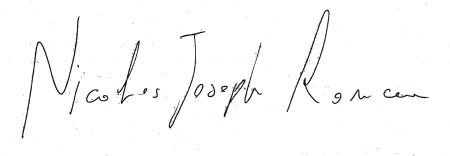Art and culture
The game of bocce in Piedmont The allure of a timeless sport

Although I don’t know how to play bocce in the slightest, believe it or not, I am particularly attached to the unmistakable, clear and dry sound of “bocciata,” or the sound of one bowl hitting another. The reason is simple: it evokes memories of my childhood and adolescence.
I was born and raised in this area where every town has its own bowling alley and bocce courts. I remember that in the summer evenings, in the beautiful period of the fifties with loud mufflers to be clear, snacks and evenings with friends often had as background accompaniment the “sound” of a game of bocce.

The fact that I know very little about this game should perhaps have deterred me from accepting the assignment to write this article. Instead, no, it became a nice opportunity to delve into a really and interesting topic and to meet a great champion.
The game of bocce is deeply rooted in the social culture of Piedmont, where it has played a significant role in the development of local communities and social activities. The first bowling association, the “Cricca bocciofila dei martiri,” was founded in Turin in 1873.
In 1898, also in Turin at the International Exhibition, the birth of the Unione Bocciofila Piemontese marked the beginning of the modern era of the sport in Italy.
In addition to being the first federation of the game of bocce, it has been an important social aggregator that has also promoted the recreational and competitive aspect of this discipline.

Bocce courts are still today, although not as they once were, meeting places where people of all ages play, socialize and keep traditions alive.
Today bocce competitions are divided into four categories: A, B, C, D. At the end of the year, the Technical Committees of each Regional, Provincial and Territorial Committee define promotions or relegations based on the scores obtained by players during the various competitions.
In the raffa specialty, players can make two types of shots: the raffata, a grazing shot, and the volo, a parabola shot. The flying technique is practiced on clay or asphalt fields covered with fine gravel.

Pétanque, similar to flying, is practiced on various terrains and can be played individually or in teams (pairs, triplets, or squares). This activity requires skill and strategy, and players must remain stationary within a circle 35-50 cm in diameter.
The goal is to place one’s bowls as close as possible to the smallest ball thrown initially. Points are awarded according to the distance of the bowls to the ball.
Today the federation’s disciplines include Paralympic bocce and beach bocce.
Marco Gamba is a former professional player, a champion with a great career behind him: in his 20 years in the big leagues, he played with some real legends, won nine titles between championships and cups, including the European championship title with Tubosider, which is the pinnacle of his journey in the federation.

In the long chat we had, in an excited tone, Marco told me about several games, the relationship with teammates and the sponsor, the bitterness of some defeats and the difficulties of certain choices.
He is able to convey his passion to me with extraordinary power.
Marco played ball as a young boy, but soon chose to switch to bocce because he was inspired by his dad, a decent player who taught himand passed on this interest.
At age 9, Marco won his first gold medal, and at age 16 on the Rivoli team, he won his first Italian championship in the student category. Teams thus begin to seek him out by offering increasingly attractive hires .

His career at the highest level can be said to begin in Fossano, where it is now a A-list player, wins so many competitions, plays with Bruzzone, Suini, Ballabene, the top players of the moment, reaching the finals of the individual national championship against Nicola Sturla, considered one of the strongest of all time.
Also in Fossano, he makes his meeting with another legend: Adriano Aghem, a highly skilled multiple champion of the period, with whom a complicity and teamwork dictated by mutual esteem and respect was born, leading the pair to win so many races together at the national level.
In the early 2000s he was recruited by Ruscalla’s Tubosider , one of the sport’s iconic teams, where he played 13 years.
After an uphill start due to tendon problems the first year, he began winning championships and international competitions until, thanks to his character and lucidity, he became the team captain and won the European title in Zagreb in 2007.
The end of the career for a bocce player can come very late, there are no age limits. In Marco Gamba’s case, tendon problems, many commitments between the national team and the championship, and personal vicissitudes led him to quit at some point.
Looking at some of the photos, through a narrative, believe me, really passionate, I felt like I was there, in a time that seems far away even though it is not so far away, to hear the stands cheering and protesting, to experience the tension of a decisive shot, the glory, the disappointment.
If you happen to come across a game of bocce, if you can stop and observe: besides the fascination of the game itself, there is a whole history and a very exciting world to discover.
